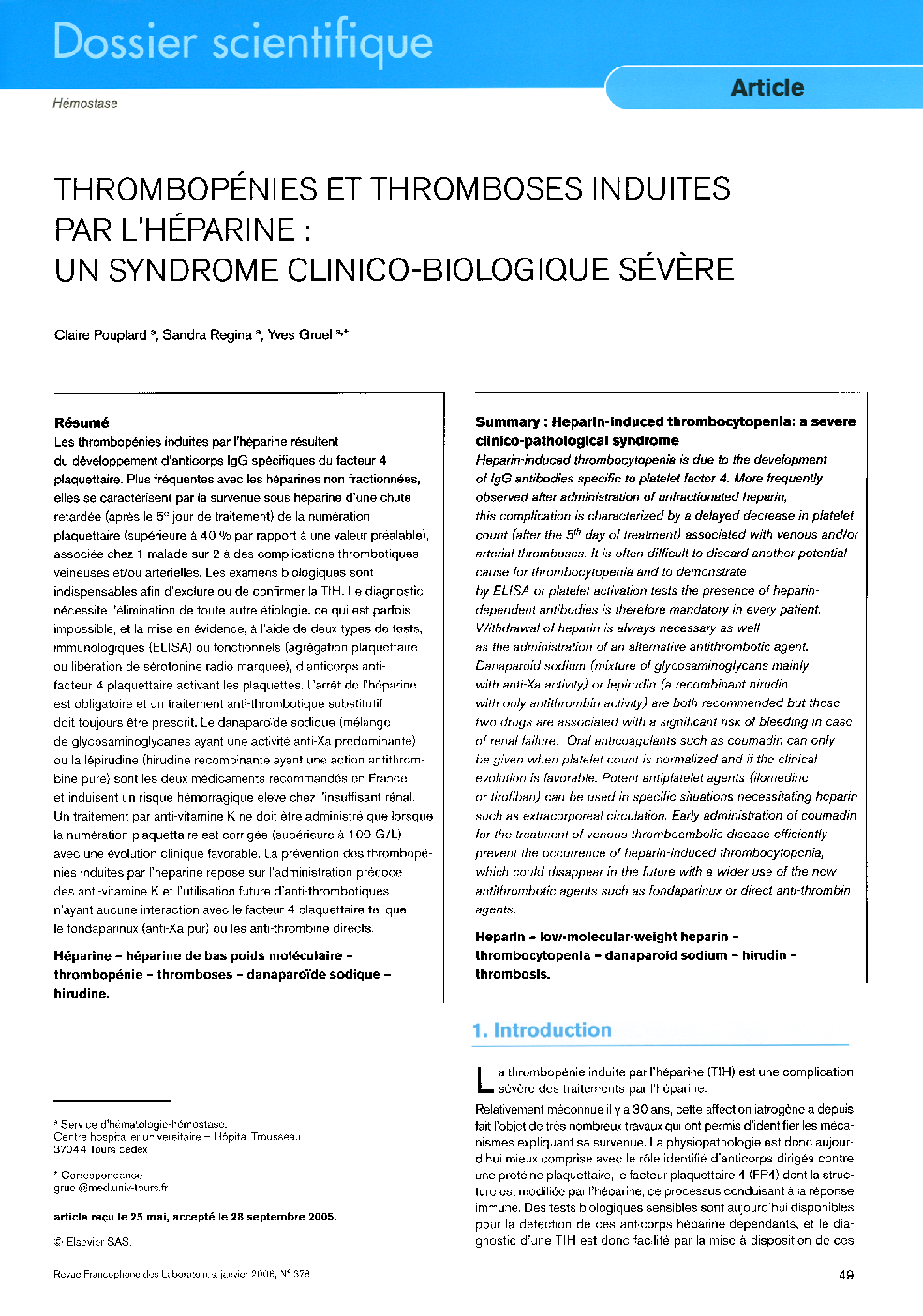| Article ID | Journal | Published Year | Pages | File Type |
|---|---|---|---|---|
| 7666824 | Revue Francophone des Laboratoires | 2006 | 10 Pages |
Abstract
Heparin-induced thrombocytopenia is due to the development of IgG antibodies specific to platelet factor 4. More frequently observed after administration of unfractionated heparin, this complication is characterized by a delayed decrease in platelet count (after the 5th day of treatment) associated with venous and/or arterial thromboses. It is often difficult to discard another potential cause for thrombocytopenia and to demonstrate by ELISA or platelet activation tests the presence of heparin-dependent antibodies is therefore mandatory in every patient. Withdrawal of heparin is always necessary as well as the administration of an alternative antithrombotic agent. Danaparoid sodium (mixture of glycosaminoglycans mainly with anti-Xa activity) or lepirudin (a recombinant hirudin with only antithrombin activity) are both recommended but these two drugs are associated with a significant risk of bleeding in case of renal failure. Oral anticoagulants such as coumadin can only be given when platelet count is normalized and if the clinical evolution is favorable. Potent antiplatelet agents (ilomedine or tirofiban) can be used in specific situations necessitating heparin such as extracorporeal circulation. Early administration of coumadin for the treatment of venous thromboembolic disease efficiently prevent the occurrence of heparin-induced thrombocytopenia, which could disappear in the future with a wider use of the new antithrombotic agents such as fondaparinux or direct anti-thrombin agents.
Related Topics
Physical Sciences and Engineering
Chemistry
Analytical Chemistry
Authors
Claire Pouplard, Sandra Regina, Yves Gruel,
